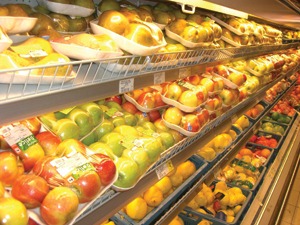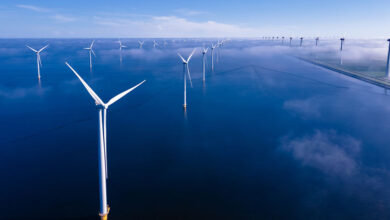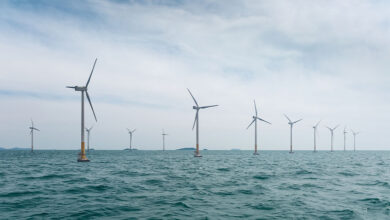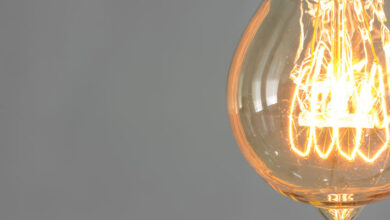Packaging tax
 A tax on packaging is being considered by the Environment Minister as part of his new national waste policy. Stephen Dineen reports.
A tax on packaging is being considered by the Environment Minister as part of his new national waste policy. Stephen Dineen reports.
Public consultation on a possible packaging levy has concluded, with the Department of the Environment receiving over sixty submissions during the process. Environment Minister Phil Hogan has told eolas that he wants to shift policy towards the production of less packaging and more re-use, rather than recycling.
The Programme for Government commited to extending producer responsibility initiatives and implementing a levy on packaging.
Speaking to eolas, Hogan said that there is too much packaging being used in certain product areas and that cooperation of business is needed to reduce it. “And if they don’t provide it,” he commented, “they certainly can’t be expected to be incentivised in any way to continue their practice at the moment.” He said the options which need to be considered “not only look at how we dispose or recycle the packaging” but also ensure that “the producer doesn’t produce as much.”
Ireland meets its recycling obligations from the EU Packaging Directives through a producer responsibility scheme, Repak, which allows companies to fulfil their waste management obligations. Each producer of packaging is identified and pays a proportion of the fee in accordance with their contribution to the final packaging product. The greatest proportion of the fee is paid by the company that decides how the product is packaged. On-site audits support a self-assessed reporting and payment system.
EPA’s national waste report 2009, published in February, showed Ireland’s packaging recovery rate at 70 per cent, up from 60 per cent in 2008. Under the EU Directive 2004/12 Ireland had until the end of this year to reach a 60 per cent target.
Comhar, the national sustainability council, has advocated a packaging levy. In a November 2010 paper on environmental tax reform it said that such a levy, if applying the Danish rates to the same range of products, would yield €20-30 million in its first year of application, increasing to €60-80 million by year four.
The levy is opposed by Repak. It stated that among the responses it received from member companies during consultation was a view that any additional increases in packaging charges could mean the closure of businesses in sectors such as the food and drink, fertiliser and indigenous exports sectors, or business lost to UK competitors.
It said that expanding and resourcing programmes such as its Prevent and Save programme (which helps producers reduce their packaging content) “is more likely to deliver results in terms of a waste reduction strategy rather than imposing a new levy on packaging.” The “pay as you produce” fee structure provides an economic incentive to reduce and minimise all product packaging, it said, stating that “most companies already tend to ‘lightweight’ or reduce material content of their packaging” in order to reduce their fee. The organisation said that due to the high level of imported packaging any added tax or incentive to reduce packaging is “relatively limited”.
Anomalies with the current system, according to Repak, are a significant number of exempt producers (including exporters) and low enforcement activity. This accounts for approximately 60 per cent of packaging tonnes being required, it claimed, to fund 100 per cent of Ireland’s recycling targets.
Retail Ireland, in its submission, expressed concern that such a levy will penalise consumers, impose double taxation on the retail sector and contribute to an increase in cross-border shopping.
Nordic examples
Finland introduced a tax on beverage containers for soft and alcoholic drinks in 1994, alongside a deposit-based re-use and recycling system. In 2005 the volume-based tax was reformed and is now graduated, with a lower tax if it can be proven that containers are part of an approved re-use or recycling system. There is no tax on containers that can be re-filled whilst there is a 51 cent per litre charge on containers which are not in a packaging return system. The highest tax rate in the system is 67 cent per litre.
The system has had several consequences. While there was an initial increase in the number of cans (25 per cent during 1995-1999), refillable packages (primarily refillable PET and glass) became the major component in the market, constituting 73 per cent of the volume of drinks and 83 per cent of packages. The volume of drink containers increased by 14 per cent and the number of packages declined by 2 per cent. By 2001, 95 per cent of cans in a deposit system were returned. The tax forced producers to develop a deposit-based recycling system for cans.
Finland’s tax led the country’s brewing and soft drinks federation to claim that the equivalent of 380,000 tonnes of waste from one-way products had been diverted through the re-filling of 290 million bottles each year. It said Finland’s refillable bottle system was the reason for the low volume of packaging (in 1997 it had a packaging level of 84kg per capita, compared with an EU average of 164kg).
Concerns with the system were expressed, however, by Finland’s competition authority in 2000, citing the system’s apparent favouritism of big breweries, inhibition on smaller companies and foreign competition entering the market. Retailers claimed the bottle deposit system was costing consumers €67 million annually. The European packaging federation, EUROPEN, said the tax is a barrier on trade, with two per cent of carbonated drinks coming from imports in Finland and Norway (and 1 per cent in Denmark) compared with a seven per cent average in western Europe.
Denmark has a two-pronged packaging tax: a volume-based tax for retail containers (up to 20 litres in volume), and a weight-based tax for the majority of products in the 18 commodity groups covered by the tax. The weight-based component was designed to reduce the amount of materials used, while the volume-based system was used to support a packaging re-fill system.
In 2001 the Danish government reformed the packaging tax by introducing taxation based on the environmental impact of different materials, with glass benchmarked as zero in terms of impact. Denmark’s packaging tax has thirteen different rates, including different rates for one-way (weight-based) and re-usable (volume-based) packaging, from €0.01 to 0.43 per pack. Different volume-based rates apply for wine or spirits containers and those for beer or carbonated drinks.
2003 figures showed 99 per cent of refillable and 80 per cent of one-way drinks packaging in Denmark was returned. Targets were 98 per cent and 95 per cent respectively. General tax revenue from packaging also decreased, suggesting the tax had succeeded in reducing packaging levels.
Research on Nordic and Baltic environmental policy between 2001 and 2005, conducted by the National Environmental Research Institute in Denmark, concluded that direct product charges appear to have been relatively effective, with the use or final disposal of the environmentally damaging product decreasing. It added, however, that evidence linking this to the taxes is suggestive at best.
Consideration of a packaging levy comes as part of Minister Hogan’s revision of national waste policy which is expected to be formally adopted by the end of the year.





